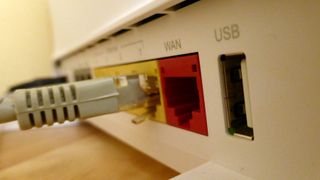Want a 330Mbps broadband line from BT? This is how much it will cost
BT has revealed its initial pilot pricing for G.fast broadband

We’ve been hearing quite a lot about G.fast broadband this year – the technology that will supercharge existing FTTC (fibre-to-the-cabinet) deployments, juicing speeds up to a much faster level – and now BT has revealed pricing details for the first time, albeit wholesale costs for the pilot program (which kicks off at the start of next year in various regions of the UK).
Wholesale prices have been set at £9.95 plus VAT per month, and that’s the rental cost for both the standard and premium tiers of the G.fast pilot (the basic plan has a download and upload speed of 160Mbps and 30Mbps respectively, with the faster connection running at the maximum 330Mbps and 50Mbps).
As ISP Review – which spotted this development – notes, obviously these two plans won’t carry the same pricing when it comes to the full launch, but this is likely representative of what the standard tariff will eventually be.
So, looking at current wholesale prices, this puts G.fast at not much more than the top-end FTTC connection (80Mbps), but of course ISPs are going to add a considerable extra premium for speeds of up to 160Mbps, as this is twice as fast as FTTC.
How much more?
As ISP Review further theorises, that means we could be looking at a £10 per month hike over existing FTTC 80Mbps plan charges, although we wouldn’t be surprised if it was more than this to begin with while the tech is new, to the tune of around £15 added on – or perhaps even pushing further.
As ever, it will of course vary from ISP to ISP, and service providers will have to strike a fine balance between getting enough revenue from the service, while not discouraging adoption.
BT’s G.fast tech is one prong of its rollout of ‘ultrafast’ (as opposed to superfast) broadband expected to reach around 12 million premises in the UK by the close of the decade.
Are you a pro? Subscribe to our newsletter
Sign up to the TechRadar Pro newsletter to get all the top news, opinion, features and guidance your business needs to succeed!
G.fast essentially supercharges existing FTTC infrastructure, allowing for much greater speeds along the last section of phone line, which runs from the fibre cabinet to the home (or business premise). The downside is that it’s still subject to degradation over distance, as with any broadband over copper wire – meaning that if you’re a long way from your cabinet, speeds may drop off considerably.
The other prong of BT’s ultrafast rollout is FTTP which runs fibre directly to the premise, doing away with the phone line entirely.
Darren is a freelancer writing news and features for TechRadar (and occasionally T3) across a broad range of computing topics including CPUs, GPUs, various other hardware, VPNs, antivirus and more. He has written about tech for the best part of three decades, and writes books in his spare time (his debut novel - 'I Know What You Did Last Supper' - was published by Hachette UK in 2013).
Most Popular

